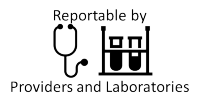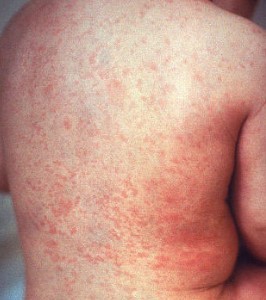Rubella (German Measles)


Infectious agent: Rubella virus
Description of illness: Rubella is a brief, vaccine-preventable viral illness characterized by a mild maculopapular rash that is rare in the United States but can be introduced by ill travelers. The rubella rash occurs in 50%-80% of rubella-infected persons and is sometimes misdiagnosed as measles or scarlet fever. Children usually develop few or no symptoms, but adults may experience a 1-5 day prodrome of low-grade fever, headache, malaise, mild coryza, and conjunctivitis. Arthritis occurs in up to 70% of infected women, but is rare in men or children. Rubella is a contagious illness transmitted through direct or droplet contact from nasopharyngeal secretions with an incubation period of 17 days (range: 12-23 days). A person is most infectious when rash is erupting, but can shed the virus from 7 days before to 7 days after rash onset. The most serious complication from rubella is the harm an infection can cause an unvaccinated pregnant woman’s developing baby, complications includes: miscarriage; stillbirths; and severe birth defects, known as congenital rubella syndrome (CRS).